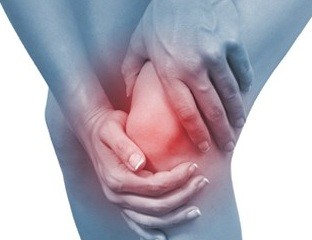 Recently, our clinic was asked to help out with a research study being conducted by Lachlan Giles, a PhD candidate at La Trobe University. Our role is deliver a quadriceps rehabilitation program for patients with patellofemoral pain (anterior knee pain), something we see a lot of at the clinic here. This is not your regular quadriceps rehabilitation program, but instead a program which utilises occlusion (or blood flow restriction). The great thing for patients who are eligible for this study, is that it is free to participate. The great thing for me is that having the equipment at the clinic has given me another approach to help the many chronic knee pain patients I see every day.
Recently, our clinic was asked to help out with a research study being conducted by Lachlan Giles, a PhD candidate at La Trobe University. Our role is deliver a quadriceps rehabilitation program for patients with patellofemoral pain (anterior knee pain), something we see a lot of at the clinic here. This is not your regular quadriceps rehabilitation program, but instead a program which utilises occlusion (or blood flow restriction). The great thing for patients who are eligible for this study, is that it is free to participate. The great thing for me is that having the equipment at the clinic has given me another approach to help the many chronic knee pain patients I see every day.
What is occlusion training?
Occlusion training involves exercise whilst using a pneumatic cuff to restrict blood flow. The decreased oxygen to the muscle, in combination with reduced ability to get rid of waste products from the exercise (e.g. lactic acid), causes the muscle to work a lot harder than without occlusion. The muscle is forced to adapt to the strenuous conditions, by increasing in size and strength, irrespective of the lighter weight being used. The beauty of this approach is that to improve muscle strength you don’t have to use heavy weights, which can often aggravate injuries due to the high load through the joint. This may in theory be very beneficial in people with chronic knee pain who need to get stronger to improve the management of their condition but pain stops completing an adequate gym program. Considering this, I think occlusion training has the potential to be a stroke of genius.
In this video, Chris Gaviglio explains a little more about how the device works.
What is the evidence?
At present, there is no evidence to support the use of occlusion training in patients with chronic knee pain. This is a driver for the completion of the La Trobe study. However, current evidence indicates gains in muscle cross-sectional area and strength using training loads of only 20% of 1 repetition maximum. Importantly, traditional strength training involves loads of around 80% of 1 repetition maximum, which is often very painful in patients with chronic knee pain. From my own personal experience over the past 6 months, I have found it very useful in some of my patients who have been struggling to complete any strength training of their quadriceps. I am confident published evidence supporting occlusion training will come – watch this space …..
If you would like further information regarding occlusion training or are interested in the La Trobe study please contact the clinic.

